'Everything is fine' - The lie told by Covid-19 patients in Italy
(Baonghean.vn) - The fight against death stops at 1 pm every day.
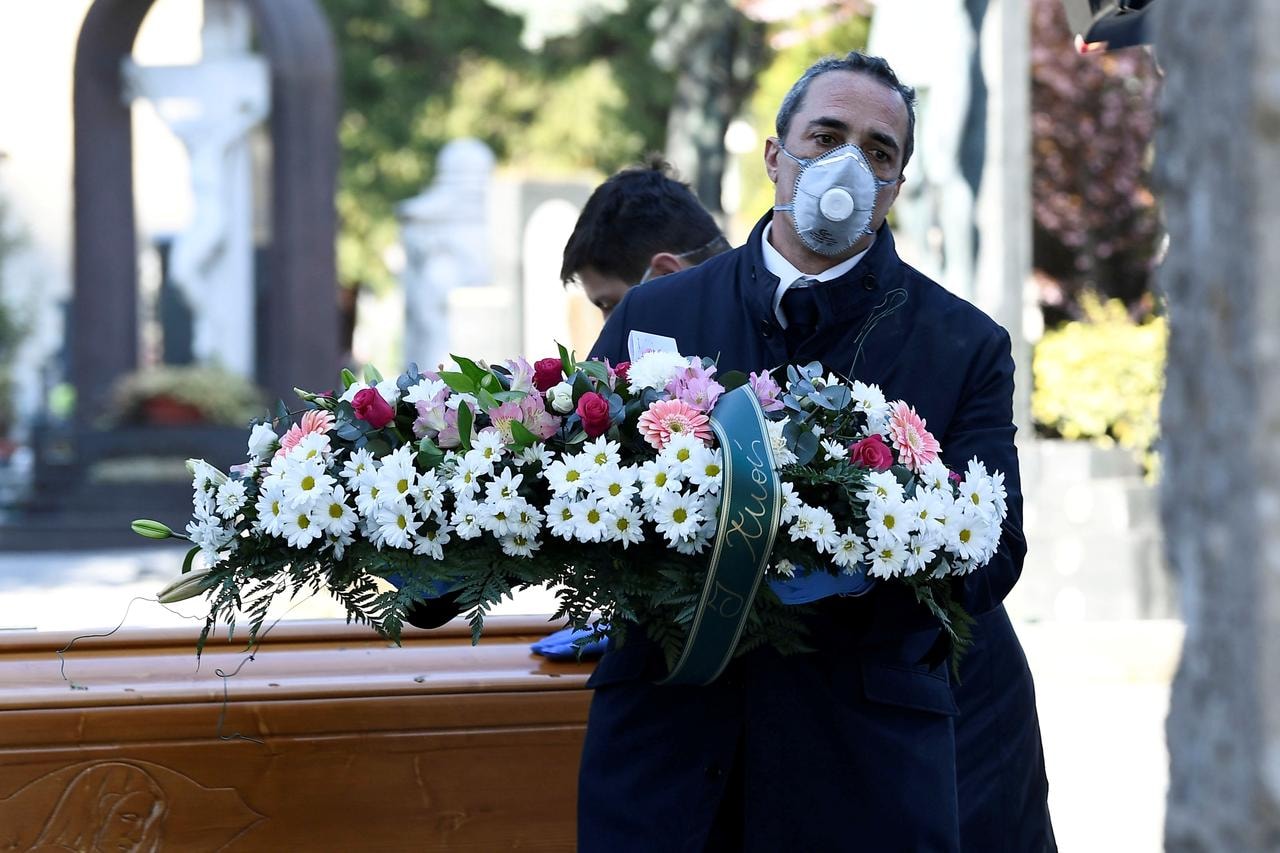 |
| Funeral home and cemetery staff wearing protective masks transport the coffin of a person who died of Covid-19 into a cemetery in Bergamo, Italy on March 16. Photo: Reuters |
At that time, doctors in the intensive care unit (ICU) of the Policlinico San Donato hospital will call to update the relatives of the 25 critically ill coronavirus patients in the unit, all of whom are unconscious and on ventilators. Lunchtime used to be visiting time at this Milan hospital. But now, as the boot-shaped country grapples with a coronavirus outbreak that has killed more than 2,000 people, no visitors are allowed in the hospital. And no one in Italy dares to leave their homes.
When doctors call, they try not to create false hope: they know that one in two patients in intensive care with the disease is about to die.
As the Covid-19 pandemic spreads, demand for these beds increases, especially because of the respiratory problems the disease can cause. Whenever an ICU bed becomes available, two anesthesiologists consult with an intensivist and an internist to decide who will use it.
Age and medical history are important factors. So is having a family. “We have to consider whether older patients have a family who can take care of them when they leave the ICU, because they will need help. If they don’t have that ability, you have to look the patient in the face and say ‘everything is fine.’ And this lie destroys you,” said Marco Resta, deputy head of the intensive care unit at San Donato Hospital.
Italy’s worst health crisis since World War II is forcing doctors, patients and their families to make decisions that Resta, a former military doctor, said he had never had to make, even in wartime. As of March 16, 2,158 people had died and 27,980 had been infected with the coronavirus in Italy, the second-highest number of cases and deaths in the world after China.
Resta said that 50% of people with Covid-19 currently being treated in intensive care units in Italy are dying, compared with the usual mortality rate of 12-16% in such units nationwide.
Doctors have warned that northern Italy, where the universal health care system is ranked among the most efficient in the world, is at the forefront of the crisis that the disease is sending around the world. The outbreak, which hit the northern regions of Lombardy and Veneto first, has crippled the local hospital network, putting its intensive care units under enormous pressure.
In the past three weeks, 1,135 people in Lombardy have needed intensive care, but the region has only 800 ICU beds, according to Giacomo Grasselli, head of the intensive care unit at Milan’s Policlinico hospital. Grasselli is the coordinator of all state-run intensive care units in Lombardy.
Such dilemmas are not new to medicine. When treating patients with breathing difficulties, intensive care physicians always assess their chances of recovery before intubating them – an invasive procedure that involves inserting a tube into the mouth, down the throat and into the airway.
But the numbers mean doctors are having to choose more often, and more quickly, who has a better chance of survival – a sort of triage that is not easy in a Catholic country that does not allow assisted suicide, and which, according to statistics agency Eurostat, has the oldest population in Europe, with one in four people aged 65 or over.
“We are not used to such drastic decisions,” said Resta, a 48-year-old anesthesiologist.
Seize the opportunity
Italian doctors say so many elderly Covid-19 patients are developing breathing problems that they cannot take their chances with those who have a slim hope of recovery.
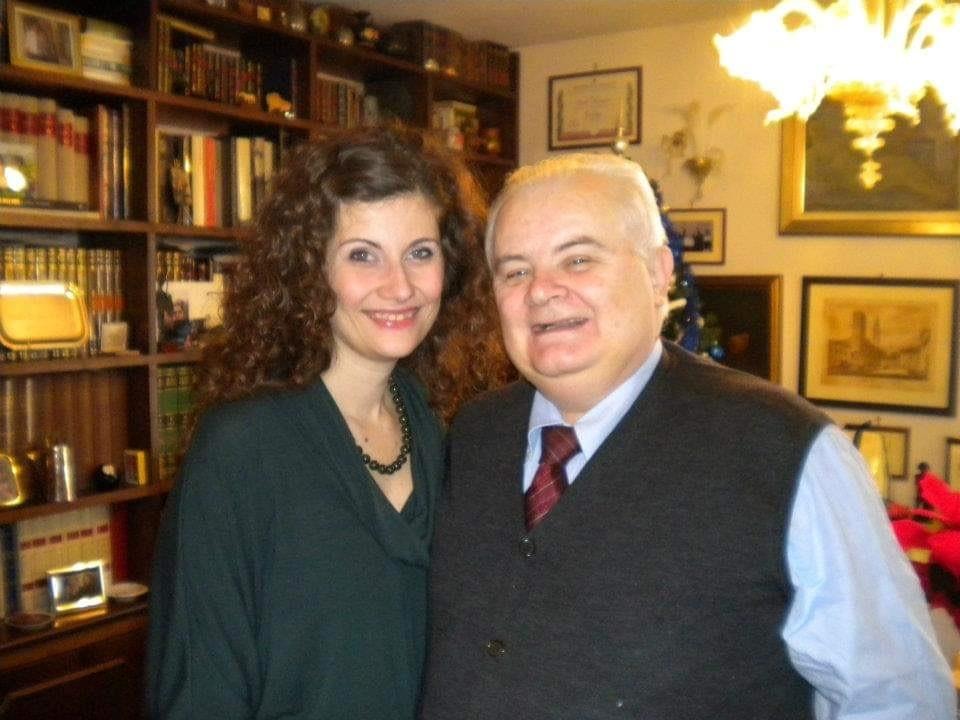 |
| Mara Bertolini, 41, poses with her father Carlo Bertolini, who recently died of Covid-19 at a hospital in Milan, Italy. Photo: Reuters |
Alfredo Visioli was one such patient. When he was diagnosed, the 83-year-old man was leading a busy, active life at home with his German shepherd, Holaf, whom his family had given him. His granddaughter, Marta Manfredi, said he personally cared for his 79-year-old wife, Ileana Scarpanti, who had suffered a stroke two years earlier.
At first, he only had occasional fevers, but two weeks later he was diagnosed with Covid-19, and he developed pulmonary fibrosis - a disease in which lung tissue is damaged and scarred, making it increasingly difficult to breathe.
Doctors at the hospital in Cremona, a town of 73,000 in the Lombardy region, had to decide whether to insert a tube to help him breathe. “They said it would be useless,” Manfredi said, adding that she had wanted to hold her grandfather’s hand as he fell into a morphine-fueled sleep before he took his last breath.
Manfredi is now worried about his grandmother. Ileana has also contracted Covid-19 and is in the hospital, though she is responding well to the breathing mask. No one has yet told Ileana that her husband has died.
Lombardy's intensive care coordinator, Grasselli, said he believed that by now every patient with a chance of recovering and living an acceptable quality of life had been treated. But he added that this approach was under pressure: "Before, with some people we said, 'Let's give them a few more days'. Now we have to be more rigorous."
Hospital reorganization
Triage is also taking place outside hospitals. On March 13, the mayor of Fidenza, a city just outside Lombardy, had to close access to the local hospital for 19 hours. It was so full of Covid-19 patients that doctors and nurses had been working for 21 days straight without a break. Mayor Andrea Massari said that while the closure was meant to keep the hospital running, it meant some people “died at home.”
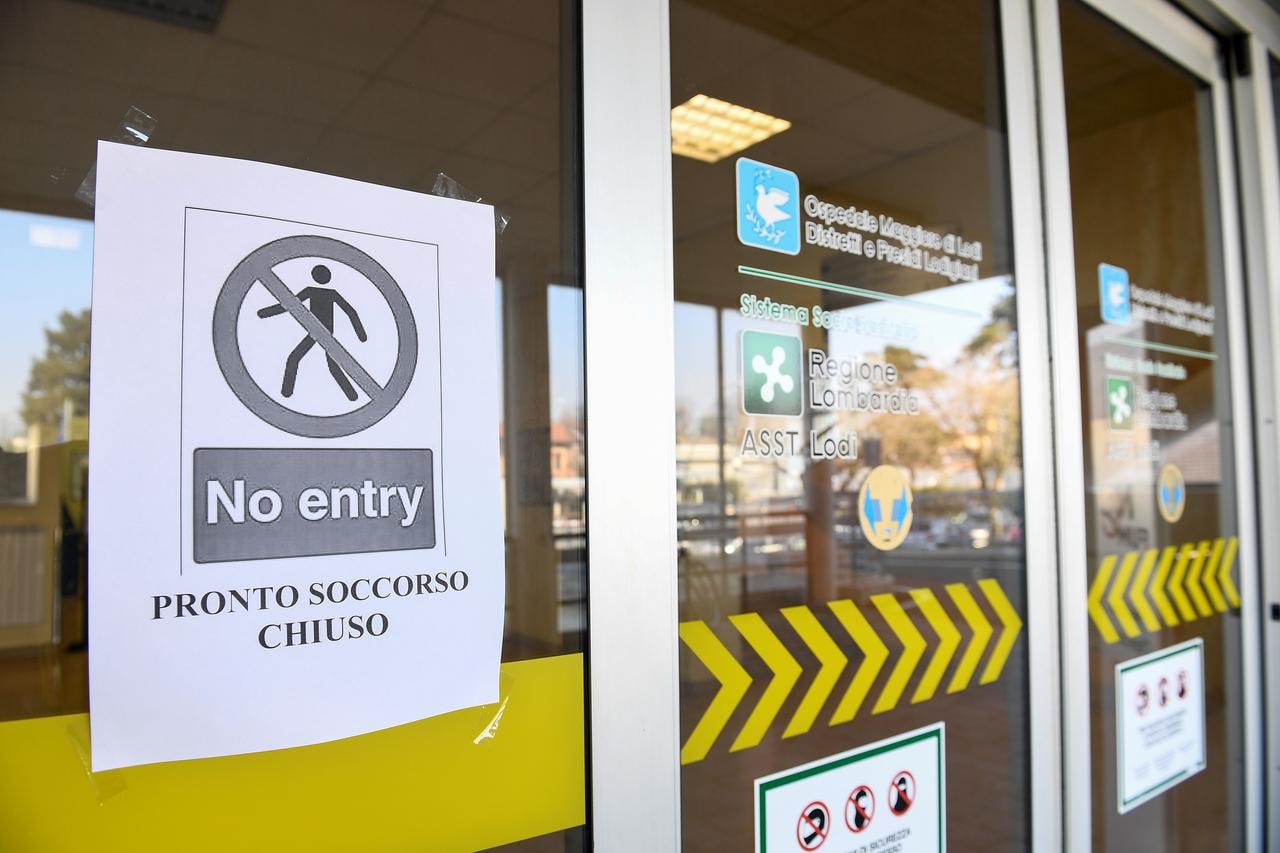 |
| A “no entry” sign at the emergency room at the main entrance of Codogno hospital amid the Covid-19 outbreak in northern Italy on February 22. Photo: Reuters |
The new coronavirus emerged in Italy in January, but the outbreak began in February in the small town of Codogno, about 60 kilometers southeast of Milan. Some health experts believe it was brought to Italy from Germany.
Rome moved quickly to isolate the north of the country, initially locking down 10 towns in Lombardy and one in Veneto. But that didn’t stop the virus. In just one week, 888 people tested positive and 21 died. Cases grew exponentially. Small towns were hit first, putting immediate pressure on small hospitals.
Since last week, Italy has been in total self-isolation, closing all schools, offices and services and ordering everyone without a valid and compelling reason to stay at home. These measures, which have been followed by other European countries, are aimed at stopping the spread of the virus.
Italian officials are particularly concerned about how to contain the outbreak in southern Italy, where the health system is much less well-funded than in the north. Private hospitals are typically reserved for paying patients. But the government has ordered them to provide free care to those with Covid-19. Policlinico San Donato, which is privately owned but licensed to work with public-sector partners, has dispatched teams of anesthesiologists and other specialists to the worst-hit towns. Fourth- and fifth-year medical students have been called into hospitals to help. Cardiologists have also been drafted in to help in emergency rooms and Covid-19 treatment wards.
Now, Grasselli says, nearly every operating room in Lombardy has been converted into an intensive care unit. Hospital staff are working overtime. Some are filling in for infected colleagues. Patients are being transferred across regions.
According to Grasselli, the nurse-to-patient ratio in the region’s intensive care units is usually 1:2. Now, one nurse is responsible for four to five patients. “We have completely reorganized our hospital system,” he said.
“Longer life”
All infected people who come to the hospital with breathing difficulties are given oxygen, Grasselli said. The question is how much oxygen they are kept on, and for how long.
Those with mild breathing problems are connected to an external machine via a mask, or if the patient is unresponsive, a face mask. If their condition worsens, doctors must decide whether to transfer them to intensive care, where they will be intubated.
But there’s a problem: Intubation can take a toll on the body, especially in older patients. Even if older people survive, many may have other problems, like difficulty walking or cognitive impairment. Still, doctors have tended to try intubating older patients in the past, often because they had the resources to do so, Grasselli said, adding that he would never intubate his 84-year-old father.
Before the coronavirus outbreak, “we used to have ample resources to try to intubate patients who were already at the borderline,” said Mario Riccio, head of anesthesia at the Oglio Po hospital near Cremona.
That’s now changed. Italy’s Society of Anesthesia, Analgesia, Resuscitation and Intensive Care published new guidelines on March 7. Because the agency predicts a “major imbalance” between the population’s clinical needs and intensive care resources in the coming weeks, it told those on the front lines: Give priority to those with “a longer life expectancy.”
“Let me die at home”
Italy’s mass quarantine of its population has added to the emotional strain on those infected. Family members are not allowed to ride with loved ones in ambulances, and coronavirus treatment units are closed to anyone other than doctors and patients. Some patients who are not yet in intensive care feel imprisoned in overcrowded wards.
“Take me away from here. Let me die at home. I want to see you again,” Stefano Bollani, a 55-year-old warehouse worker, texted his stay-at-home wife, Tiziana Salvi, from the pre-intensive care unit of Policlinico San Donato, where he was being treated for pneumonia after contracting the virus.
The couple have not seen each other since his wife dropped him off outside a hospital in Milan nearly two weeks ago. All she knows, she said, is that his condition has improved in recent days. “These are not the kinds of things a husband should write to a wife who is out of town and unable to see him,” she added.
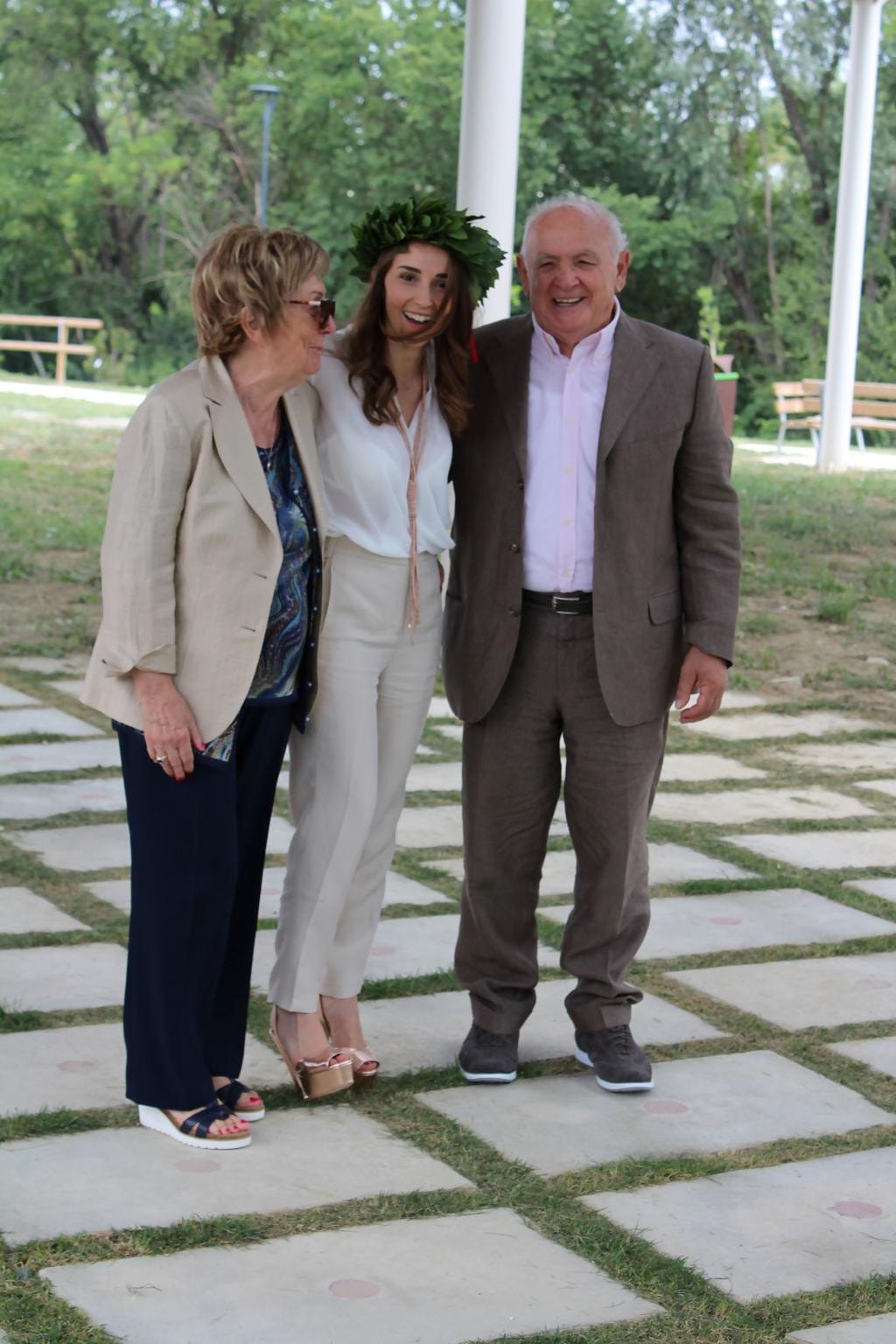 |
| Marta Manfredi poses for a photo at her graduation ceremony with her grandmother Ileana Scarpanti and Alfredo Visioli, who died at the age of 83 from Covid-19 after doctors decided not to intubate him. Photo: Reuters |
And some older patients resisted going to hospital. Carlo Bertolini, a 76-year-old agronomist in Cremona known locally for his detailed histories of the town’s former vineyards and taverns, was initially reluctant to seek help, according to his daughter.
Bertolini, who lived alone, began feeling ill in early March. His best friend eventually called an ambulance to take him to the town hospital. Speaking to his daughter by phone from the hospital, he described the sheer number of patients and the cacophony of sounds in the ward. “I felt like I was in a war,” he said, according to his daughter, Mara Bertolini.
Carlo was then transferred to the intensive care unit of a larger hospital in Milan. Mara and her sister were allowed to visit him in protective gear – masks, gloves, white gowns – to see him through the glass doors of the ICU. “They told us he was the most critical case in the ICU,” she said.
“Stay home”
Former military doctor Resta said the situation in Lombardy felt worse than the 1999 war in Kosovo, where he served in an air rescue team flying patients from Albania to Italy.
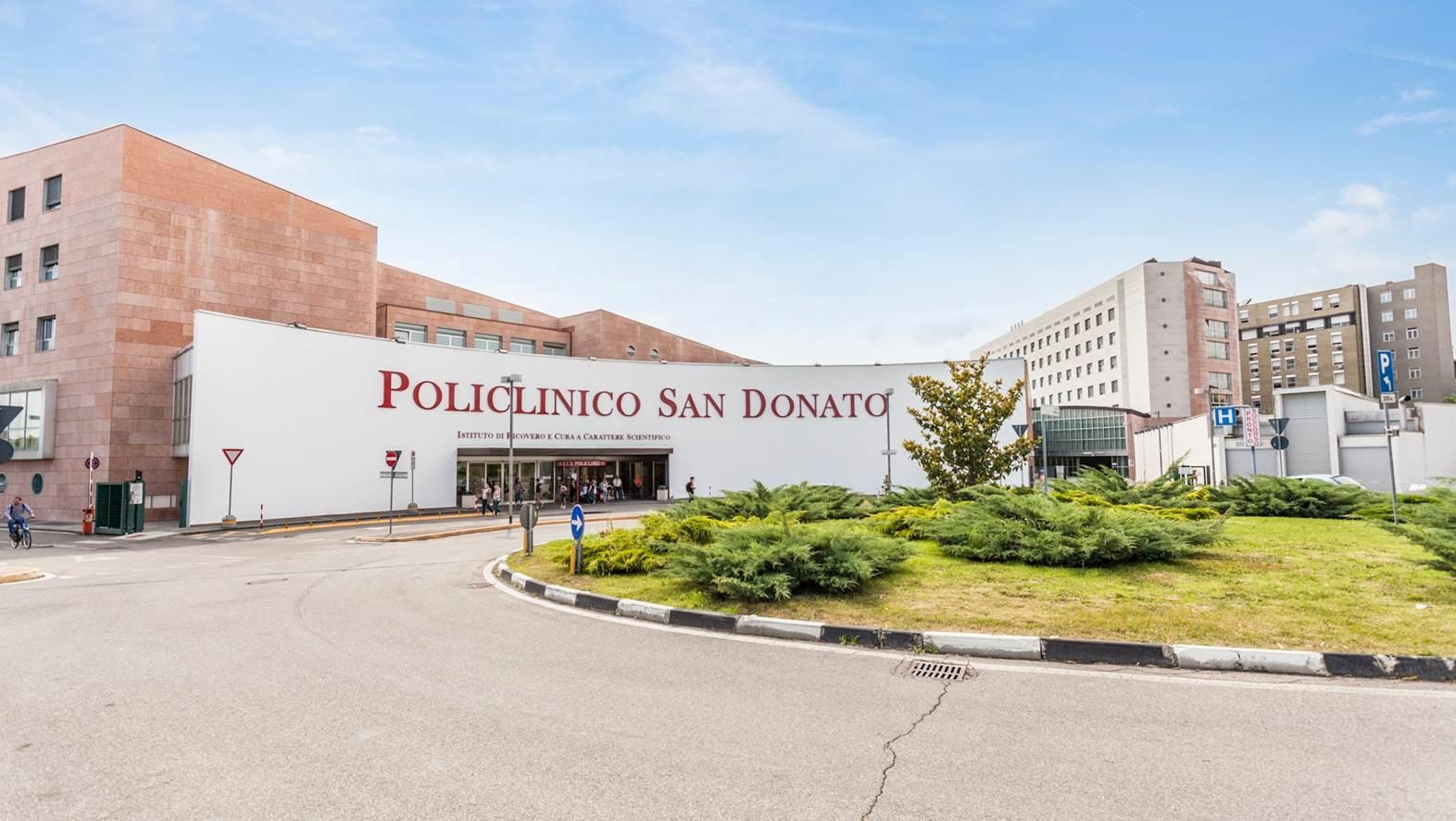 |
| Policlinico San Donato Hospital in Milan, Italy. Photo: Reuters |
He said that whenever a coronavirus patient is admitted to the hospital where he works, staff will write an email to their relatives, assuring them that their loved ones will be treated “like family.” He said the hospital is working to activate a video call system so patients can see their loved ones during a 1 p.m. call.
A doctor, not a relative, is often the last person a dying Covid-19 patient sees. Loved ones are often prevented from even approaching the coffin for fear of catching the virus.
The last Mara Bertolini heard of her father Carlo, a wine historian, was when someone from the morgue called another family member to say they had received his body. She said she had no resentment toward the doctors who worked so hard.
What haunted her most about her father’s condition last week was the look on the doctor’s face when she saw him. “I couldn’t tell if it was worry or sadness. All he said to us was, ‘Stay home,’” she recalled./.
